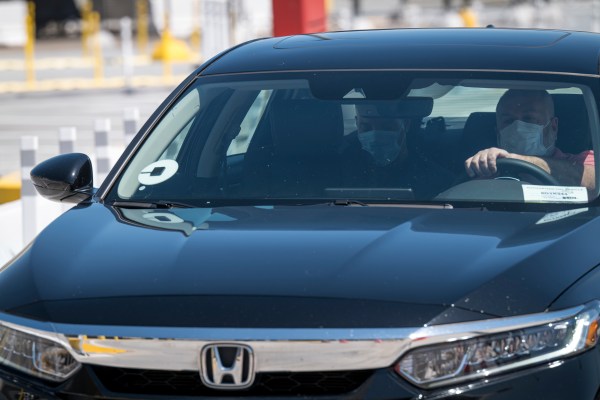Uber may use its selfie tech to verify drivers are wearing masks - 2 minutes read
 When Uber rolled out its selfie system for drivers in 2016, the ride-hailing company was focused on preventing fraud. In the future, it could be used to ensure drivers are wearing a mask.
When Uber rolled out its selfie system for drivers in 2016, the ride-hailing company was focused on preventing fraud. In the future, it could be used to ensure drivers are wearing a mask.Update: Uber said May 13 it will use its selfie tech to verify drivers are wearing masks.
Uber said earlier this week — CEO Dara Khosrowshahi reiterated today — that it is working through plans to require drivers and riders to wear face masks or face coverings as it prepares to ramp its ride-hailing business back up after being hobbled by the COVID-19 pandemic. The mask requirement will be issued in certain countries, including the United States.
Uber is leaning on a combination of logistics and technology to ensure when rides do ramp up that drivers are properly protected, Khosrowshahi said during Thursday’s earnings call.
“We’re shipping millions of PPE and masks, cleaning supplies etc., to our drivers to make sure that first drive, and the second, and the continuing drives, that our riders are safe and they feel safe,” he said.
Some gig workers, including those who work for Shipt, Uber, Lyft and Instacart, have complained that they are struggling to get masks, gloves and other personal protective equipment. Supply chains, which are stretched as hospitals and healthcare facilities as well as companies gearing up to bring workers back to the office, compete for this equipment.
On the technology front, Khosrowshahi honed in on its existing products.
“We are looking at technologies such as, for example, our selfie technology where we make sure that the driver who signed up is the actual driver who is driving,” Khosrowshahi said. “We can use that technology, for example potentially, to make sure that the driver is wearing a mask where appropriate.”
Khosrowshahi didn’t provide further details of when the mask requirement would begin, and when the selfie technology might be used for mask verification.
The driver selfie technology, officially known as Real-Time ID Check, is a security feature that uses Microsoft Cognitive Services. Real-Time ID Check prompts drivers periodically to share a selfie before being allowed to accept fares. The account is temporarily locked if the selfie doesn’t match the photo that Uber has on file. The aim of the technology is to prevent fraud and protect riders and drivers.
Source: TechCrunch
Powered by NewsAPI.org